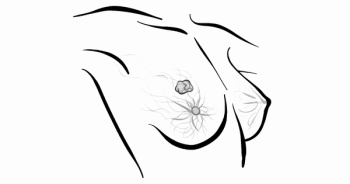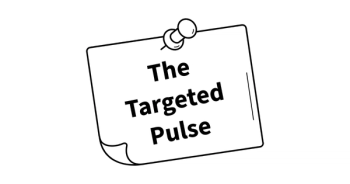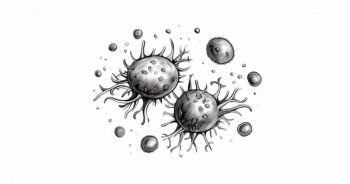
ASCT Fails to Improve MRD Negativity After Isa-KRd in Multiple Myeloma
A phase 3 trial did not support a transplant-based approach for patients who already achieved MRD negativity or a tandem transplant approach for those who did not achieve prior MRD negativity.
Consolidation therapy with autologous stem cell transplant (ASCT) after quadruplet therapy guided by minimal residual disease (MRD) status did not show benefit in patients with newly diagnosed multiple myeloma, according to findings presented at the
In patients who achieved MRD negativity following induction of Isa-KRd (isatuximab [Sarclisa], carfilzomib [Kyprolis], lenalidomide [Revlimid], and dexamethasone), ASCT consolidation did not significantly improve MRD negativity. In patients who had MRD-positive status after induction, tandem ASCT did not provide greater benefit in MRD outcomes vs single ASCT.
“The academic MIDAS trial [NCT04934475] is the first phase 3 study to evaluate MRD-guided consolidation strategy after Isa-KRd induction in transplant-eligible myeloma,” said Aurore Perrot, MD, associate professor in hematology at the University of Toulouse in France, in her presentation.1
As MRD is a predictor of outcomes including progression-free survival (PFS) in multiple myeloma, the phase 3 IFM2020-02-MIDAS study was designed to investigate if there is additional benefit of ASCT in patients who achieve MRD negativity after induction therapy. Tandem ASCT has demonstrated benefit in patients who are at higher risk of relapse, but has primarily been investigated following triplet therapy.
The MIDAS study enrolled 791 patients to receive Isa-KRd for 6 cycles with SCT collection after cycle 3. Patients were eligible if they had newly diagnosed multiple myeloma, were aged less than 66 years, considered transplant eligible, and had no active cardiac disease. Of the enrolled patients, 757 completed induction, 761 had stem cells collected, and 751 were evaluated for MRD. Post induction, 499 patients, or 63% of the intent-to-treat (ITT) population, achieved MRD negativity at 10-5 sensitivity, whereas 47% had MRD negativity at 10-6. Those with translocation t(4;14) were more likely to be MRD negative (81%) vs those without this feature (62%), whereas those with translocation t(11;14) were less likely to be MRD negative than those without this feature (40% vs 71%, respectively).
Patients who were MRD negative at 10-5 were randomly assigned to receive ASCT plus 2 cycles of Isa-KRD (n = 242) vs 6 cycles of Isa-KRd (n = 243), each followed by 3 years of lenalidomide maintenance. Those who were MRD positive were randomly assigned to receive tandem ASCT (n = 124) vs single ASCT plus 2 cycles of Isa-KRD (n = 109), with both arms receiving 3 years of isatuximab plus iberdomide as maintenance. Perrot noted that approximately 15% of patients assigned to tandem ASCT did not complete treatment.
Looking at the patient characteristics at the time of randomization post Isa-KRd, Perrot said they were well balanced besides higher frequency of t(11;14) in the MRD-positive arms vs the MRD-negative arms.
Post-induction MRD negativity at 10-6 sensitivity was 76% in those receiving consolidation Isa-KRd vs 73% in those receiving ASCT plus Isa-KRd. Following consolidation, the MRD rates were 84% vs 86%, respectively, in the ITT population, showing no significant difference (P = .64). In the MRD-positive group, 40% achieved MRD negativity after single ASCT plus Isa-KRd compared with 32% with tandem transplant (P =.31).
“The subgroup analysis comparing arms A and B did not identify any specific patient populations in which transplant adds a meaningful impact on MRD negativity after consolidation. Similarly, the subgroup analysis comparing single vs tandem transplant did not reveal any patient population that appeared to benefit from a second transplant,” stated Perrot.
In patients who received consolidation Isa-KRd, MRD negativity at 10-6 increased from 76% to 90% with 42 patients (24%) achieving MRD negativity over consolidation, whereas in those who received consolidation ASCT, MRD negativity increased from 72% to 93% with 63 patients (28%) achieving MRD negativity over consolidation.
In those with t(11;14), only 24% were MRD negative at 10-6 post induction, which increased to 63% post consolidation regardless of treatment arm. In those without t(11;14), post-induction MRD negativity was 59%, and increased to 78% after consolidation.
No new safety signals appeared in the consolidation phase in the MRD-negative group and no adverse events (AEs) occurred with greater than 10% frequency, with the ASCT arm showing additional AEs related to melphalan including nausea, mucositis, febrile neutropenia, and sepsis. In the MRD-positive group, the only AEs with a frequency of greater than 10% were mucosal inflammation in 12% and stomatitis in 14% of the tandem ASCT arm. There was also a higher rate of vascular device infections in the tandem ASCT arm.
With the median follow-up at 16.8 months in the MRD-negative at induction group and 16.3 months for the MRD-positive at induction group, PFS and sustained MRD negativity data were not yet available.
“The lack of added benefit with ASCT in MRD-negative patients may be explained by the very high MRD negativity rates already achieved after induction,” Perrot suggested.
She recommended that future strategies should combine initial cytogenetic risk and MRD-based stratification. “These findings support a more individualized induction approach based on MRD status,” she concluded.










































